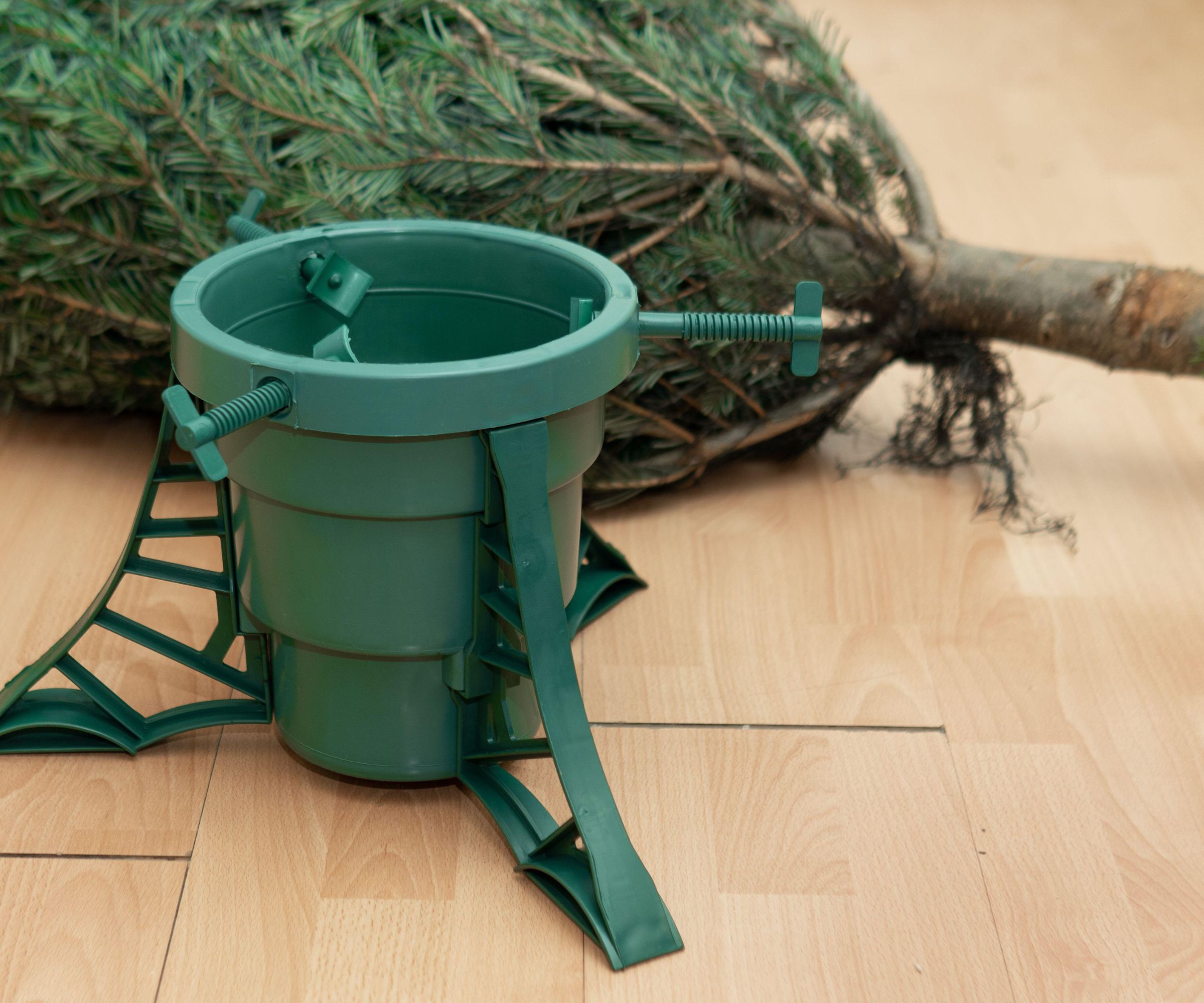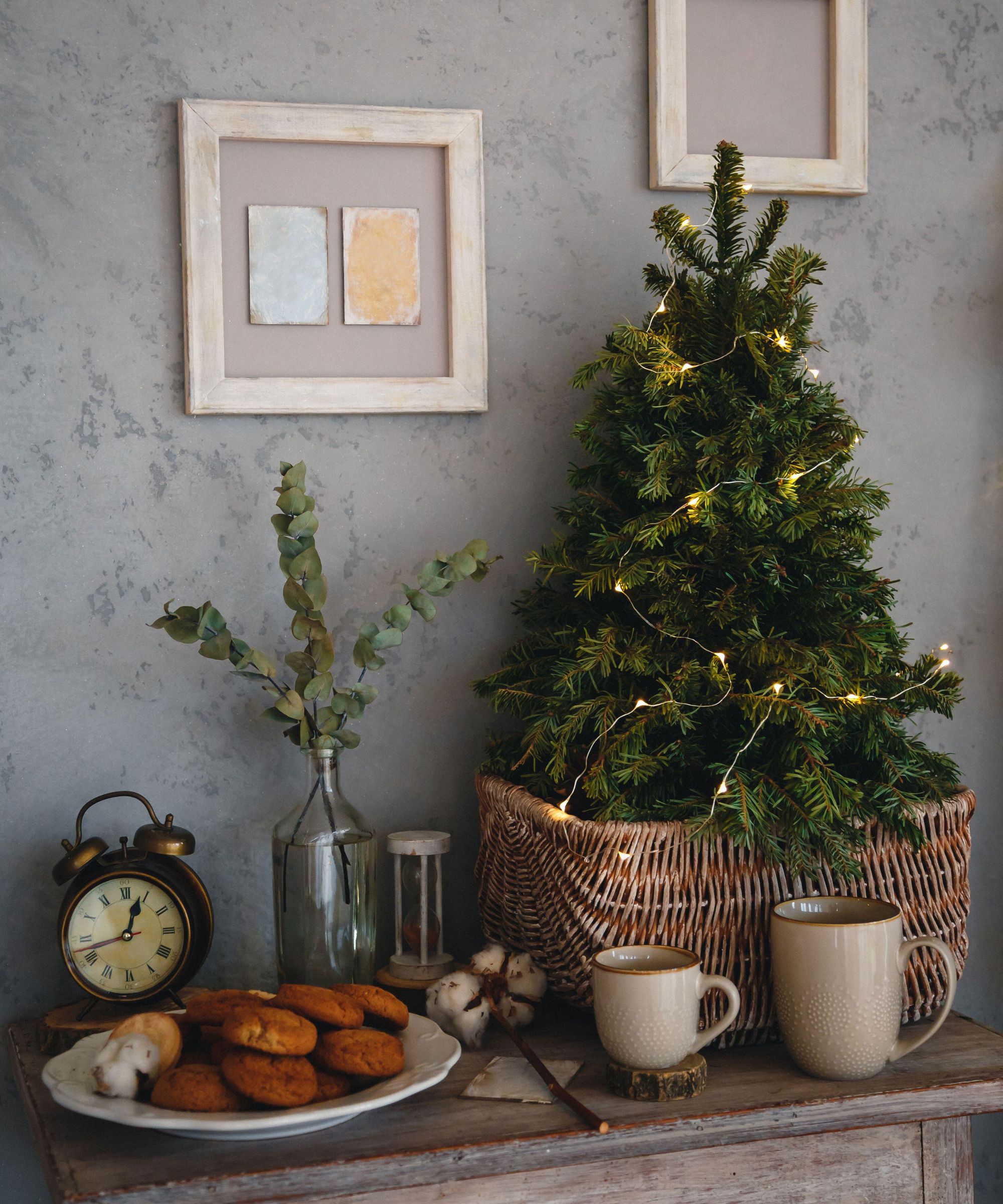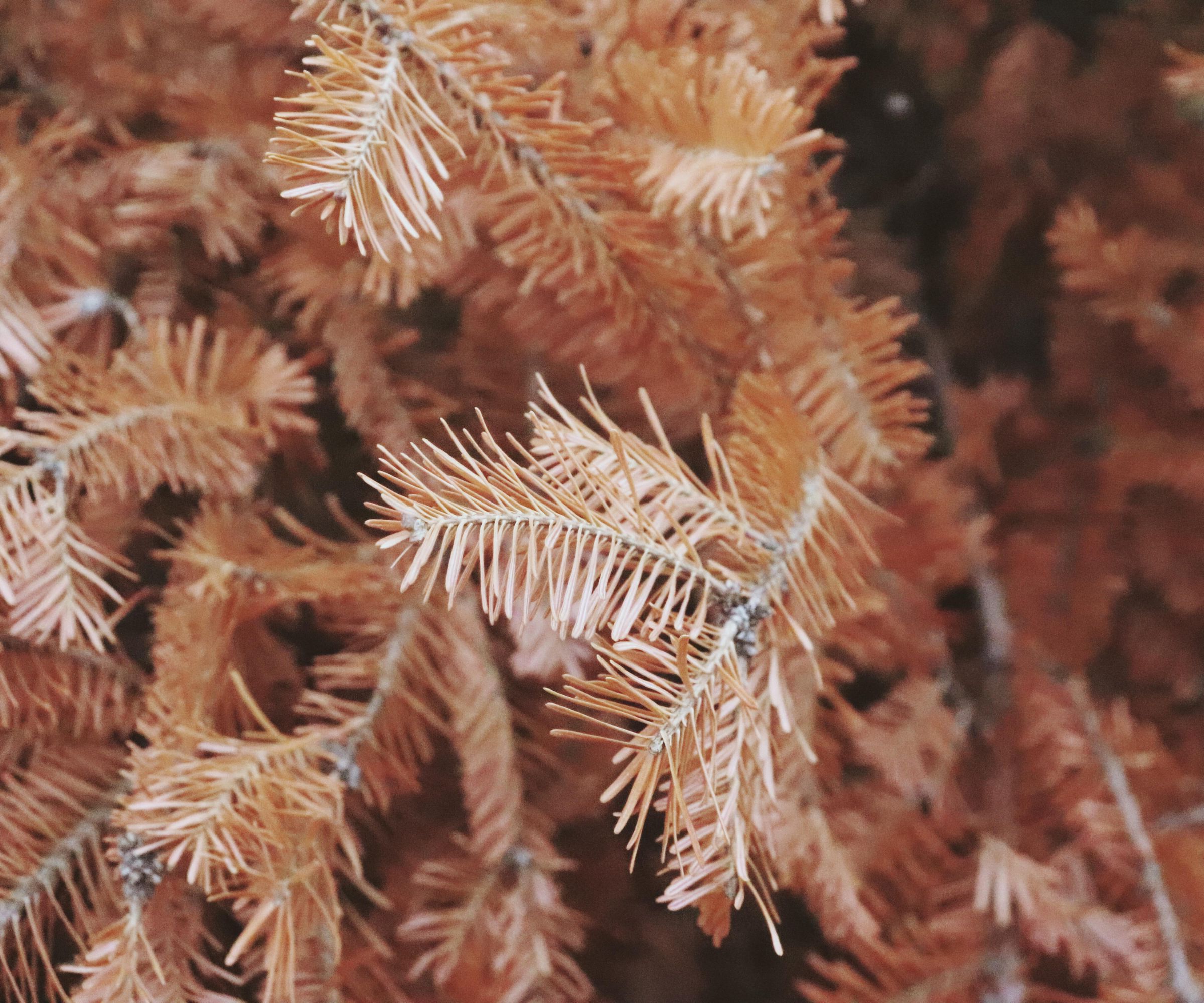Bad-smelling Christmas tree? 5 expert tips to freshen up your real or artificial tree
Don’t let a musty-smelling Christmas tree dash your hopes of a pine-scented Christmas. Here is how to freshen it up


There is nothing like the fresh smell of a Christmas tree to help set the festive mood at Christmas. Whether you pick a real tree each year or artificially scent your faux tree, an overwhelmingly pungent odor can put a dampener on celebrations.
If your faux tree has come out of its box smelling musty, or your living one has developed a foul fragrance no matter how dutifully you have been trying to keep your Christmas tree alive, an unexpected, bad smell can be inconvenient, to say the least.
Here, we explore the main reasons why your real or fake Christmas tree could smell bad, and offer solutions to make your home smell good for Christmas once again.
Why does my real Christmas tree smell bad?
‘A bad-smelling Christmas tree has the power to ruin Christmas if it becomes strong enough,’ says Rachel Crow, garden editor for Homes & Gardens. ‘Finding the root of the problem is essential to removing the smell.’ These are the top four.
1. Stagnant water in a real tree's reservoir could be releasing foul smells

A cut Christmas tree can ‘drink’ up to two pints of water a day depending on its size, however, if your tree doesn’t seem to be taking as much in, then stagnant water could be the source of the foul smell around your Christmas tree.
When watering a Christmas tree, keep an eye on the water level to make sure it is being absorbed before topping it up. If you notice the water level isn't dropping after a day or so, it may be that the base of your tree has been sealed over by tree sap or resin, causing water to become stagnant and smelly.
There are a few things you can do. First, adding two to three tablespoons of plain white vinegar can help to neutralize the smell of stagnant water and kill water-borne bacteria without harming a tree. If the smell has not dissipated after a few days, then you may need to drain the reservoir completely and exchange the old water for fresh tap water. If your Christmas tree stand has a drainage hole at the base, this should be a simple task, but it will be troublesome if not.
Design expertise in your inbox – from inspiring decorating ideas and beautiful celebrity homes to practical gardening advice and shopping round-ups.
Although difficult, take precious decorations off of the branches before having someone lift the tree free of its stand as carefully as possible. Take the time while it is out of the water to check for a resin or sap cap on the base of the trunk which may be preventing proper water absorption. If a resin cap is present, it requires retrimming. ‘To free the base of your tree from resin without trimming the trunk, pour some hot but not boiling water into the reservoir to help melt the solidified layer of sap,’ says Rachel Crow, Homes & Gardens' garden editor. ‘If this doesn't work, you may need to remove the tree from its holder and cut the bottom inch or so off of the trunk.’
It is a good idea to keep an empty bucket nearby to empty the reservoir once the tree has been lifted free to save walking through the house to a sink.
2. A cut tree may be decomposing, even if you have only just brought it inside

Cut Christmas trees are capable of going moldy if kept in the wrong conditions for too long. The result? A rotten-smelling Christmas tree – and possibly gnats too.
‘If your home is particularly humid, you mist your Christmas tree leaves regularly, or you were simply in a rush to put up your Christmas decorations and brought the tree in early, the chances are your tree is suffering mold and mildew,’ says Rachel Crow. Mold releases volatile organic compounds into the air which not only produce an acrid smell but look awful on your tree too.
If your pre-cut Christmas tree is dying but you have only just brought it home, it might be that they were cut and stored for days if not weeks before going on sale. Trying to source freshly cut trees, or cutting a tree yourself at a dedicated farm is the best way of ensuring that you have a well-looked-after tree that will last throughout the season.
The solution? 'For small amounts of mold on the leaves and trunk, wiping the area down with plain vinegar can help to kill mold spores and neutralize bad smells,' says Rachel. 'You can also add two tablespoons of vinegar to your tree's water to help neutralize mold around the base.'
If your home is particularly humid, consider investing in a dehumidifier that can help to combat mold before it spreads to other areas of your home.
For some trees, spot-treating mold may not be possible – especially if it has spread to cover large areas of your tree. If this is the case, disposing of the tree and replacing it may be the only solution. Although this is a hassle at Christmas and can cost a lot of time and money, mold spores are a health hazard to both you and your pets and side effects can quickly become serious. Given that no one wants to spend Christmas at the doctor's office, replacing the tree with a fresh one is the wise option.
3. Not all living trees smell alike – you may have selected a particularly potent variety

‘There are over 600 types of trees that resemble the traditional Christmas tree, and not all of them smell of fresh pine and Christmassy fir,’ says Homes & Gardens’ Rachel Crow. ‘Some varieties of junipers, for example, smell particularly pungent. While the smell is not harmful, it is not exactly Christmassy either.’
If you cannot spot any causes of bad smells or symptoms of rot on your tree, then add an air freshener close to the tree to help mask the smell until Christmas Day. Although it is not the perfect solution, air fresheners or an air purifier can be a good quick fix for a nasty-smelling tree.
4. A rooted tree may be suffering from root rot

‘A potted Christmas tree, much like any potted plant, is susceptible to root rot,’ Rachel warns. ‘Watering a tree too frequently can oversaturate the soil. Instead of watering daily like you would a cut Christmas tree, water only once the top two inches of soil have dried out completely.’
Phytophthora root rot will not only smell bad but will affect the look of your tree too as needles turn a bright orange-brown shade. While the smell is not harmful, it can foster a variety of common houseplant pests such as fungus gnats which are certainly not guests we would like to host on Christmas Day.
‘If your rooted tree has the early signs of root rot, then repotting it into fresh, dry soil could be the only way to save it,’ explains Rachel Crow. ‘While it is best to repot a Christmas tree in spring, it can be done at any time of the year when faced with disease. Free the tree from its old pot and remove as much of the old soil from the roots as possible. Now is a good time to cut away any roots that have clear signs of decay,’ she advises.
‘Once the roots have been cleaned, move the tree into a pot filled with a multi-purpose potting compost that is at least four inches bigger to allow for new root growth. When picking a new pot, it is essential that it has large drainage holes to allow for excess water to escape,’ Rachel warns.’ Without them, your tree is not likely to survive another year.’
If your tree has started to change color, then replacing the tree entirely may be your only option. ‘Some plant problems simply cannot be reversed once they have been left to develop,’ Rachel says. ‘Although it is impractical, a new tree is the best way to ensure a fresh-smelling Christmas.’
Why a faux Christmas tree can smell musty

Although a faux Christmas tree is often more practical than a real one, they are just as capable of emitting bad smells. The good news is that it is usually easier to treat a fake Christmas tree than a real one.
'Given that most of us store our Christmas trees in a box or bag in a humid environment such as an attic, basement, or storage container, they can quickly become damp and develop a musty smell,' explains Pippa Blenkinsop, interior stylist and writer for Homes & Gardens. 'The solution is often simple and only requires leaving your tree outside on your porch or under another covered area for a day or so to allow the smell to dissipate in the fresh air. Just make sure it does not get wet, as this can only make the problem worse,' she explains.
If you are pushed for time, or fresh air has not been enough to remove the smell entirely (this might be the case if your tree is particularly old) then a vinegar-water mix can be sprayed on the tree to remove mildew spores and neutralize bad odors. Combine equal parts white vinegar and water in a spray bottle, adding some essential oils if you want a specific scent, before evenly spraying down your decorated tree and allowing it to dry completely before decorating.
To keep your tree smelling nice throughout the holiday, consider hanging plenty of pine-scented ornament sticks like these highly-rated ones on Amazon to help mask any remaining bad smells and emulate having a real tree.
What is the lifespan of a Christmas tree?
Inside, a Christmas tree has a lifespan of approximately four weeks before it should be disposed of. Signs that a tree may be nearing the end of its life include no longer absorbing water, dropping needles, browning, drooping branches, and bad smells.
What Christmas tree smells the nicest?
A Balsam fir is one of the most fragrant Christmas trees. This iconic Christmas scent along with its durability and hardiness makes the Balsam fir the most popular option for Christmas trees around the world.

Chiana has been at Homes & Gardens for two years and is our resident 'queen' of non-toxic living. She spends most of her time producing content for the Solved section of the website, helping readers get the most out of their homes through clever decluttering, cleaning, and tidying tips. She was named one of Fixr's top home improvement journalists in 2024.